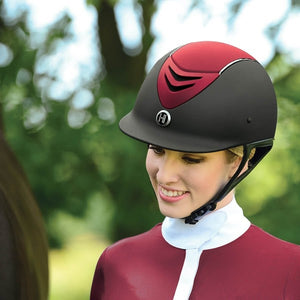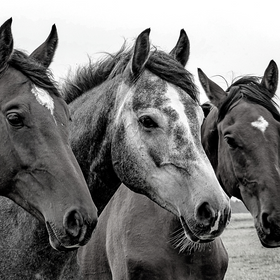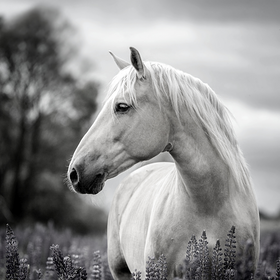
Laminitis - Warning Signs
What is Laminitis?
Also known as “founder,” laminitis is a widespread but preventable disease. Laminitis may be acute, meaning the initial or first occurrence, or chronic, meaning it is a long-term condition. Laminitis is inflammation of the laminae within the hoof capsule and prolonged inflammation can cause permanent damage.
Laminae are “velcro-like” connections between the hoof wall and the coffin bone. The coffin bone is the bottommost bone in a horse's leg, similar to the bone at the tip of your middle finger. With laminitis, the connections of the laminae are stretched, pushing the coffin bone down or rotating it, so the end of the bone is directed to the bottom of the foot.
In severe cases, the bone will protrude through the button of the foot. As you can imagine, this excruciating condition causes lameness and, in extreme cases, can be fatal.
What causes Laminitis?
There are several contributing factors to laminitis, such as:
- Overeating or abrupt change in diet
- Traumatic Injury
- Eating feed high in sugar (Grass founder)
- Poor conformation
- Lazy personality/exercise intolerance
- Obesity
- Retained placenta after foaling
- Excessive weight bearing on one limb
- Bedding that contains black walnut shavings
- Severe colic
- High Fever or Illness
A few other risk factors to consider are:
- Breed - Mini’s, Donkeys, Morgans, Ponies, Quarter Horses, and heavy breeds like Draft Horses
- Older horses with Cushing's Disease
- Being Overweight
- Horses who have had laminitis in the past are at an increased risk of developing it again.
Eating grass high in sugar is one of the leading causes of laminitis. If you have lush pastures, consider using a grazing muzzle, limiting grazing time, or mowing the field before allowing horses to graze. Sugar content is highest in the early morning when dew is present. Avoid allowing your horses to graze on fields in the early morning to reduce sugar intake.
Signs of Laminitis
The symptoms of laminitis are the same symptoms associated with pain, whether acute or chronic. Here are a few of the most common signs to watch out for:
- Lameness is the most common indicator of laminitis and one of the first signs observed. Signs could include an unwillingness to walk, turn in circles, shift weight from side to side, limping and lifting feet, lying down a lot, or total refusal to stand.
- Increased heart rate, respiration, and body temperature. You may also feel excessive heat in the feet.
- “Sawhorse Stance” - The horse will stretch its front legs and position their hind legs further back to relieve the pressure from their front feet.
- In more chronic cases, you may see “flat foot” or “dropped sole.”
- Bruised soles
- Widened white line, sometimes referred to as “seedy toe.”
Treatment
Each case of laminitis is treated a bit differently depending on the horse, their environment, and contributing factors.
Treatment could include:
- Dietary restrictions
- Stall rest on soft shavings that do not include black walnut
- Opening and draining any abscesses that may have developed or ruptured
- Fluid therapy for sick or dehydrated horses
- Prescription medications may help to alleviate pain and reduce inflammation.
- Diagnosing the primary cause of the laminitis
Your veterinarian and farrier will work closely to treat and support your horse during laminitis. Establish good communication between the two to ensure everyone knows the treatment plan.
“An ounce of prevention is worth a pound of cure.”
Now you know what laminitis is and the signs to watch out for, you can better manage the things you can control. If you suspect your horse may be suffering from laminitis, don’t wait. Contact your veterinarian immediately. The faster you act, the better the outcome for your horse.





